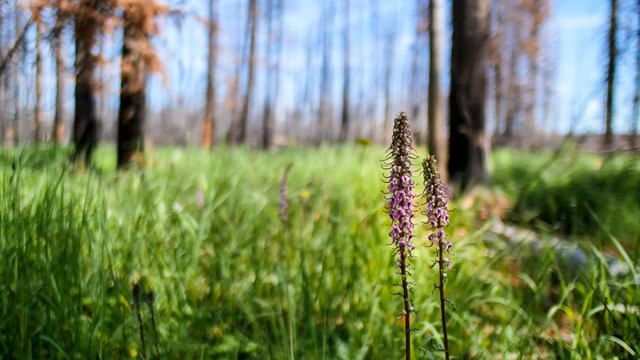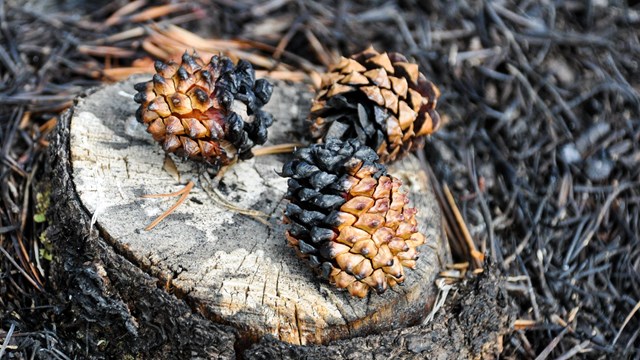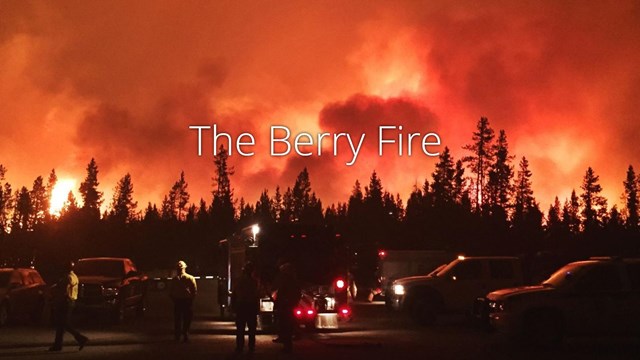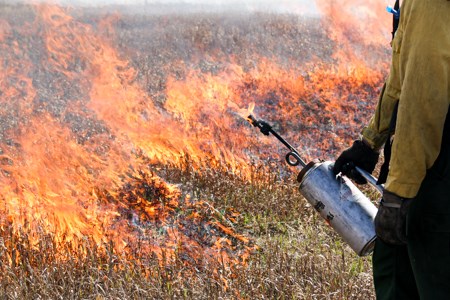
NPS Photo Fire in Grand Teton
Fire has been a part of the Greater Yellowstone Ecosystem for thousands of years. Its presence is important for wildlife habitat, nutrient recycling, plant diversity, and overall landscape health. Fire managers at Grand Teton National Park seek to strike a balance between restoring and maintaining natural fire processes and protecting human life and property.
When a fire starts, staff have a range of options that fall along a spectrum between trying to put out a fire and simply monitoring its behavior. For example, if a fire starts near a developed area, during a hot, dry summer, crews will likely attempt to suppress it as best they can. (And managers always aim to put out human-started fires.) Conversely, if a fire is in a remote area, far from human development, staff can choose to manage it with a monitoring strategy. In reality, most fires fall somewhere between those two scenarios. Even in remote areas, where fire is often allowed to play its natural ecological role, there are frequently cabins or camps that staff will work to protect. And even when crews are working to suppress a fire and keep it away from structures or roads, one flank of the fire may be allowed to move toward wilderness areas where it can benefit the forest. Often, natural fuel breaks can be used to contain fires, rather than putting crews at risk, expending large amounts of money, or damaging vegetation through fire containment actions (like cutting down trees and digging fire line).
For example, the Berry Fire, in 2016, was managed with multiple goals in mind: keeping firefighters and the public safe; allowing fire to play its natural role; and protecting structures like Lower Berry Cabin and Flagg Ranch. At times, crews took suppression actions like digging fire line, setting up hoses and sprinkler systems, conducting burnouts, etc. in order to protect buildings and infrastructure, and to re-open the park highway after the fire crossed it. To discover more about the Berry Fire, watch a short video and explore a story map about it. 
Fire History
Learn more about past fires in Grand Teton, and how management strategies have changed over time. 
Fire Ecology
Explore the natural role of fire in Grand Teton and the Greater Yellowstone Ecosystem. 
Fire Media
Discover more about fire in the park through video, audio, and multimedia. Interagency ManagementIn Jackson Hole, several agencies and jurisdictions overlap, including Grand Teton National Park, the Bridger-Teton National Forest, the National Elk Refuge, Teton County private lands, and the town of Jackson. Fire crosses these boundaries, so these agencies have come together to share resources and expertise, forming Teton Interagency Fire. Grand Teton National Park and the Bridger-Teton National Forest work especially closely to manage fire in a fully cooperative way. Teton Interagency crews made up of Park and Forest employees train together, respond to fires regardless of jurisdiction, and share resources like engines, helicopters, and crews for fuels management and fire effects monitoring. This pioneering agreement also allows the Park and the Forest to share specialized positions like a fire ecologist, fire planner, and aviation officer, which neither would be able to support on their own. To learn more about wildland fire management, explore the NPS Fire In-Depth page or the National Cohesive Wildland Fire Management Strategy, whose vision is “To safely and effectively extinguish fire when needed; use fire where allowable; manage our natural resources; and as a nation, to live with wildland fire.” 
NPS Photo Fire JobsVisit the NPS Fire & Aviation Management Careers site for information on National Park Service fire jobs, including job descriptions, career stories, and current opportunities. Tetonfires.com shows current job openings for Grand Teton National Park and our neighboring Bridger-Teton National Forest. Explore the NPS Employment page for information on current service-wide openings and how to apply for a federal job. All fire positions with the federal government are posted on usajobs.gov. Applications for most summer seasonal positions are open in the fall or winter. Grand Teton National Park's fire and aviation program works closely interagency partners to provide a diverse, efficient, and effective fire management operation that includes wildland fire response, prescribed fire, fuels management, fire effects monitoring, and fire suppression. This program provides excellent opportunities to work within an interagency operation and interact with the local community. Positions include engine crewmembers, fire module, fire effects crew, helitack, fire prevention and education, fire dispatch, and incident administration. These jobs may entail:
|
Last updated: July 30, 2024
